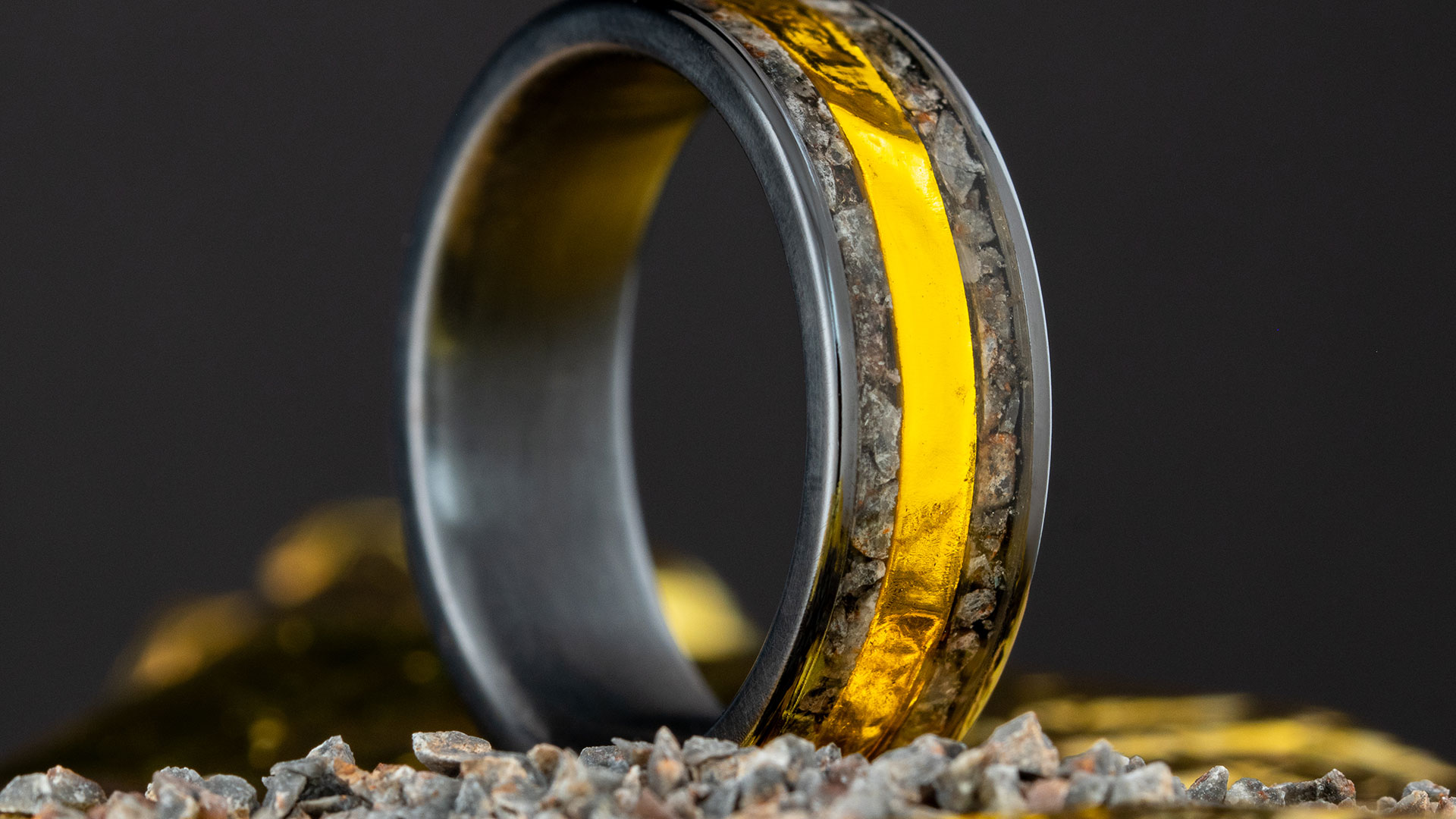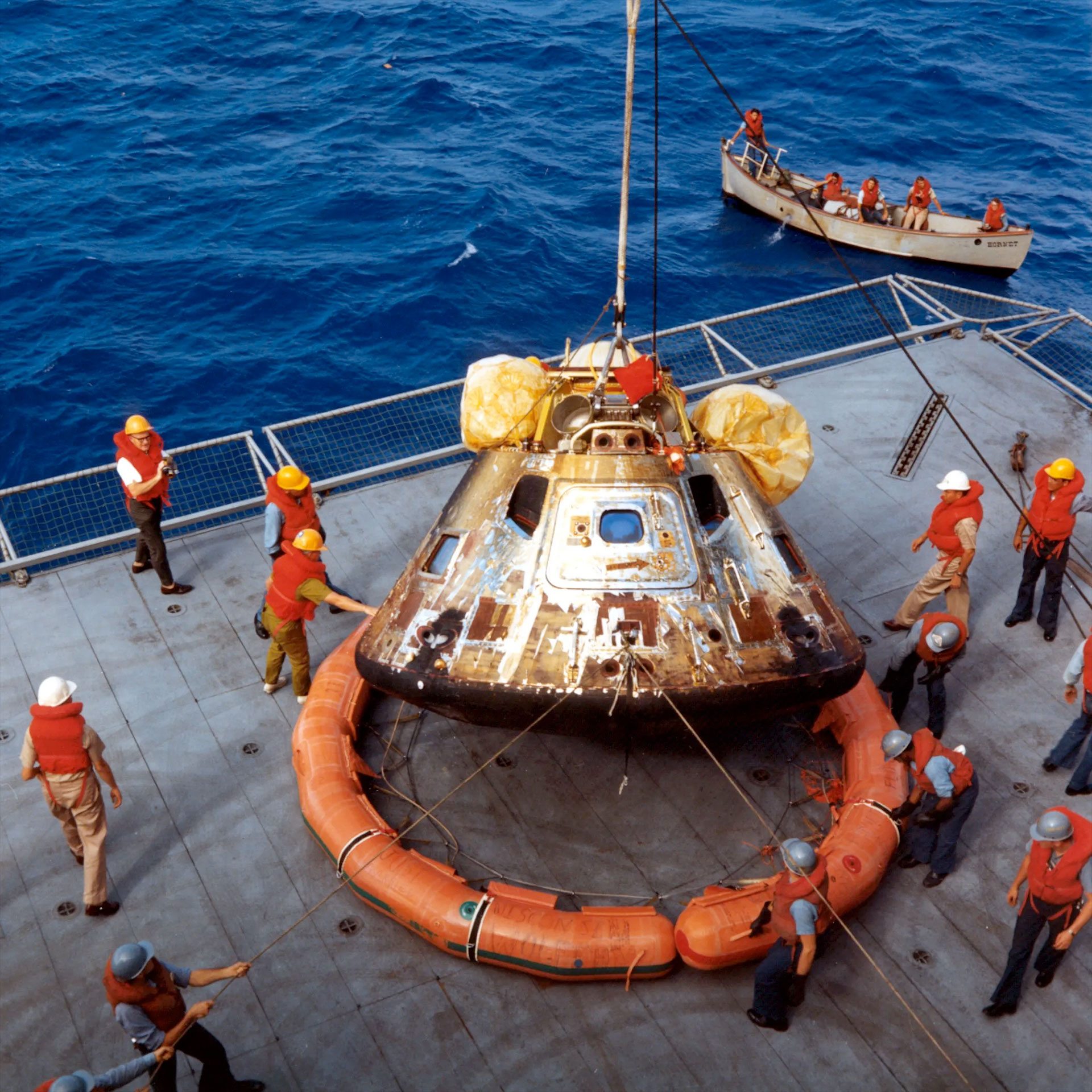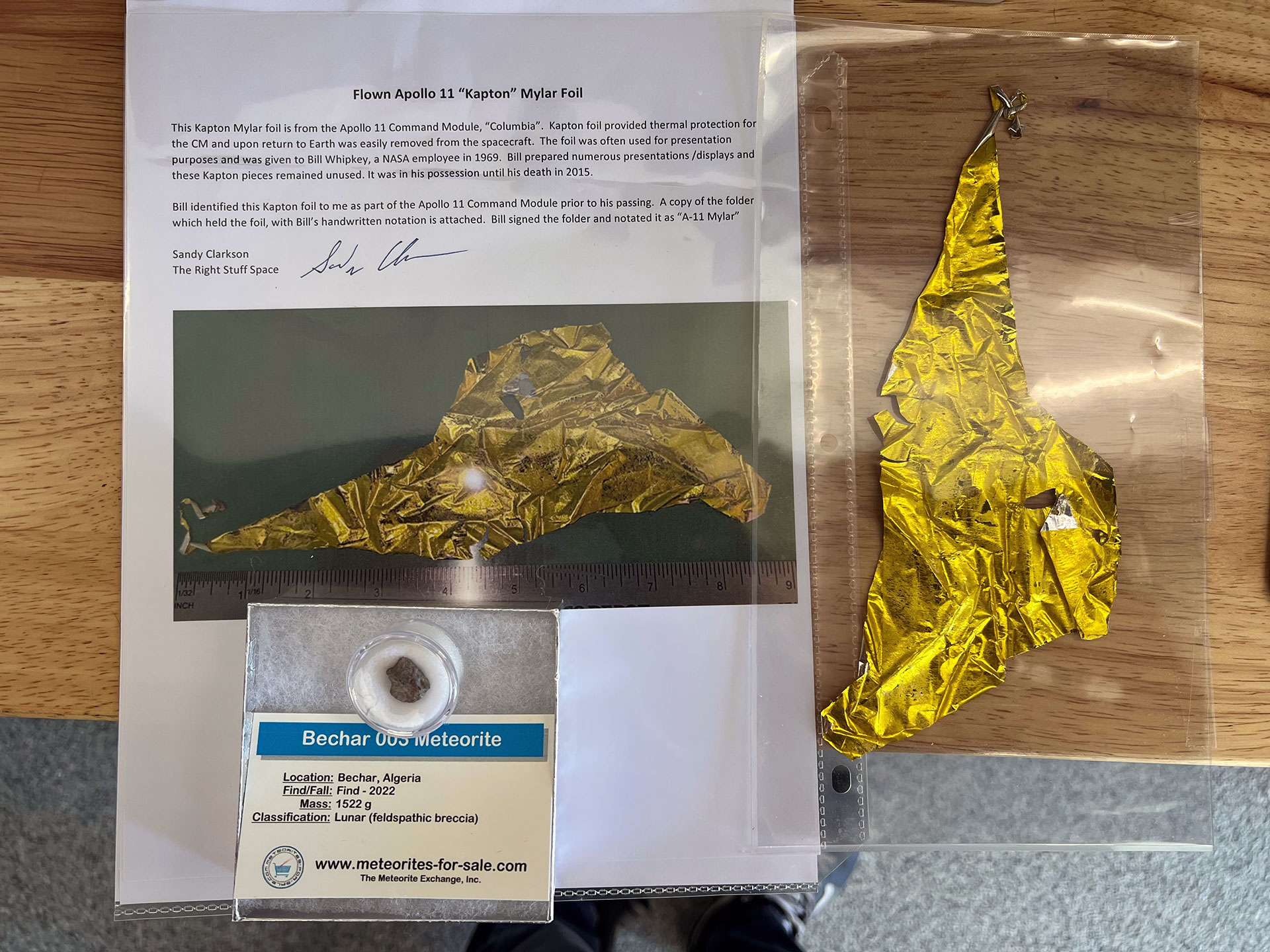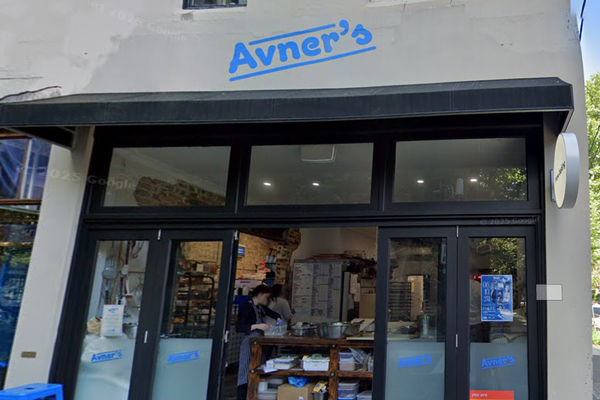
For better or for worse, a small part of the Apollo 11 spacecraft will now be Jon Mesick's to have and to hold for all the days of his life.
The strip of golden thermal polyimide tape, which made the trip to the moon with the first astronauts to land there in 1969, is now the centerpiece of Mesick's custom wedding band made by the Honest Hands Rings Company of Morrison, Colorado. The ring, which also incorporates lunar meteorite, is the focus of a newly posted online video that highlights the ring's significance and shows how it was made.
"We've made thousands of rings before, but never with anything this rare," said Ben Bosworth, Honest Hands Ring Co. owner. "That was the most stressful ring that we've ever done."
Mesick's desire to have a piece of the Apollo 11 mission integrated into his ring stemmed, in part, from his work as a planning manager for Lockheed Martin. The aerospace company is one of the prime contractors for NASA's Artemis program, providing Orion, the spacecraft currently planned to return the first astronauts to the moon in more than 50 years.
Related: The Apollo Program: How NASA sent astronauts to the moon
The Mylar-like, flown-to-the-moon foil was acquired at an auction. The 9-inch (23 centimeters) piece traced back to the estate of an NASA production control engineer who headed the machine shop responsible for preparing artifacts for museum display and mementos for distribution to space agency officials, employees and others.
"It's a much larger piece than I needed for the ring, but I'm going to frame [the remainder] in my house. It's something I will always treasure," said Mesick in an interview with Denver 7, an ABC News affiliate.
Peeling back history
The Apollo 11 spacecraft was comprised of two vehicles: a command module named "Columbia" and the lunar module "Eagle." The earlier remained in lunar orbit with astronaut Michael Collins while Eagle landed at Tranquility Base with moonwalkers Neil Armstrong and Buzz Aldrin.
Columbia's exterior was covered in an aluminized laminate. The tape's outer layer was silver in color to reflect sunlight, while underneath was gold to expel radiation. Both helped regulate the command module's temperature on the trip from Earth to the moon and back.
When Columbia returned home, the intense heat generated during the reentry into the atmosphere resulted in some of the tape burning off. After splashing down in the ocean and being hoisted onto a ship to be carried back to shore, the peeling, gold film became an attractive and easy target for members of the recovery team to take as a souvenir.

"There have been several occasions in which unauthorized removal of equipment ... have included stripping of small pieces of the kapton thermal coating," wrote Jim McDivitt, an astronaut and Apollo Spacecraft Program Manager, in an October 1969 memo. "I would like to point out to all personnel concerned that this unauthorized removal of equipment, no matter how small it may seem, constitutes a violation of our responsibility."
Still, even once the command module reached its post-flight processing facility, technicians were instructed to remove large swaths of the tape to allow for the inspection of the underlying hardware. By the time Columbia was delivered to the Smithsonian in 1971, only very small traces of the reflective film remained.
'Will never exist again'
Honest Hands' manufacturing lead Haydn Coats began forming Mesick's ring by machining a zirconium band with a carved-out interior channel that he lined with pebbles from the moon.
Lunar rocks collected by the Apollo astronauts are considered a national treasure. No individual has ever been given one. There are other pieces of the moon, however, that fell to Earth as meteorites, and they can be legally bought and sold. The lunar meteorite in Mesick's ring was found in Algeria in 2022.
"Came here from the moon," said Coats, "just so we can crush it up and put it into this customer's ring."
Once the lunar meteorite gravel was secured in place, attention turned to carefully slicing off a strip of the Apollo 11 flown tape to be inlayed into the ring.
"It feels like something between aluminum foil and high-tech aluminum foil," said Coats. "It's super lightweight. There's nothing to it."

"It's all come down to this moment, preparing to cut a piece of NASA and American history," said Bosworth. "I think that's definitely the most valuable thing [we've] cut before."
Among the other rings that Honest Hands has made are bands incorporating a vinyl record, an arcade token and field dirt from a World Series baseball game.
"Customer rings are always stressful, but the fact that this was Apollo 11 space-flown Kapton that was won at auction, super valuable material that will never exist again, that's what makes this ring so special," said Bosworth.
Follow collectSPACE.com on Facebook and on X at @collectSPACE. Copyright 2024 collectSPACE.com. All rights reserved.







